Acoustics and Communications Collection
Welcome to the acoustics and communications collection at Aberystwyth University Physics Museum. This collection of artefacts dates back to the early 20th century with an assortment of First World War era telegraphs and wireless radio receivers.
This collection is split into three sections:
AUDIO
2 Air Music Box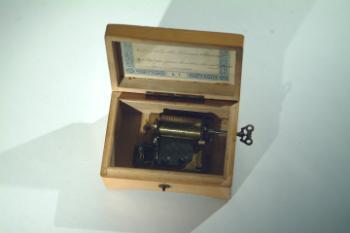
By A. W. Gamage, Ltd. London. 1920
Made in Switzerland, this music box plays two songs and is in a wooden case with an image of 4 cats painted on the lid.
Test Records

By The Gramophone Company Ltd, London. 1937
This book of 5 records was used to demonstrate the properties of sound. There are 4 constant frequency records and one demonstration record. Album No. 252.
Dove’s Acoustic Siren
By Tisley and Spiller. London. 1870
This siren uses a bellows to pass air through holes in two disks, producing sound and causing the disks to rotate. The dials recorded the number of times the disks rotated, allowing the user to determine the frequency of the note produced.
Sound Sensitive Flame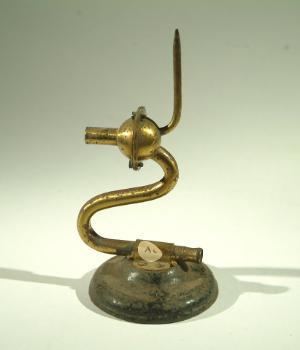
Circa 1900
This gas flame resonated with certain frequencies of sound to produce a very high pitched note. This piece was used alongside a rotating-mirror oscilloscope.
Schaefer Continuous Resonance Apparatus
By Zimmerman, Leipzig. 1900
Four of these resonators are complete in case and cover a wide range of musical notes.
Tuning Fork On Resonance Box
Striking the fork causes the soundwaves to resonate inside the open cavity for a long, sustained note.
PHONOGRAPHS
Ffonograff Edison GEM Model B
Gan Thomas A. Edison. 1905.
Offer i recordio a chwarae recordiau. Mae tonffurfiau sain yn cael eu hysgythru, eu hargraffu neu'u torri ar wyneb silindr cwyr er mwyn recordio'r sŵn. Er mwyn chwarae'r record, mae'r silindr yn cael ei gylchdroi wrth i nodwydd ddilyn y donffurf ac atgynhyrchu'r sain. Roedd y ffonograff hwn yn chwarae silindrau 2-funud.
Silindr Cwyr ar gyfer Ediffon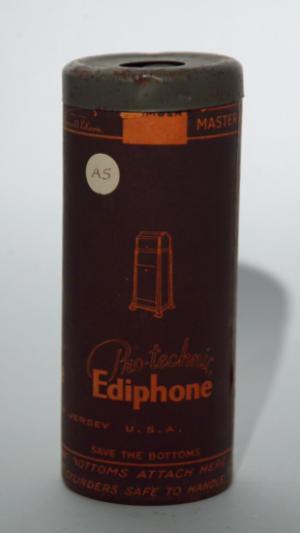
Gan Thomas A. Edison. 1925.
Silindr cwyr i'w ddefnyddio ar system ffonograff i recordio neu chwarae sain.
Phonograph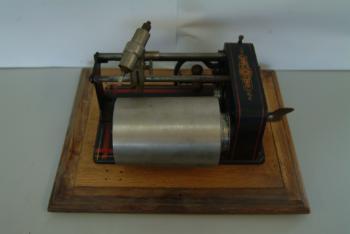
By EWC. 1905
This phonograph plays 3” cylinders but the reproducer is missing.
From B. Davies collection.
Edison Standard Model C Phonograph
By Thomas A. Edison. 1907
Playing 2 minute cylinders, this piece is missing its original reproducer. Serial No. 634338.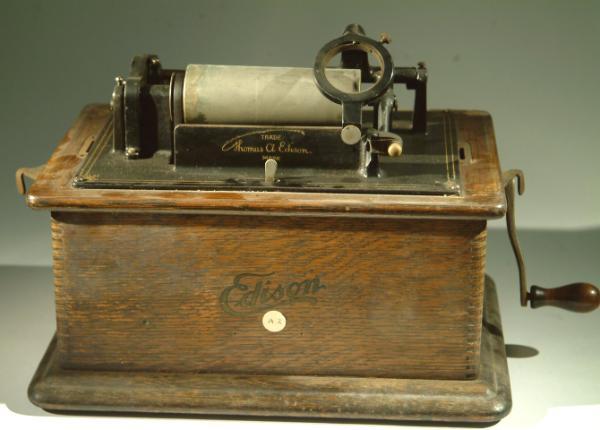
TELEGRAPHY
Derbynnydd Telegraffiaeth Crisial Di-wifr, Model Td, Rhif 304
Gan Gambrell Bros. Ltd. 1916.

Byddai'r teclyn hwn yn cael ei ddefnyddio i dderbyn gwybodaeth dros bellteroedd cyfyngedig yn ddi-wifr yn ystod y Rhyfel Byd Cyntaf. Derbynyddion goddefol yw derbynyddion crisial a dim ond sain gwan maent yn ei greu felly bu'n rhaid defnyddio clustffonau sensitif i wrando arnynt.
Crisial a 'Blewyn y Gath' o Dderbynnydd Crisial Cartref
Gan E. M. Job. 1928.
Darn nad oedd yn rhy gostus oedd y crisial lled-ddargludol mewn derbynyddion telegraffiaeth di-wifr. Mae 'blewyn y gath' yn wifren drydanol denau sy'n cyffwrdd yn ysgafn â'r crisial yn y derbynnydd er mwyn unioni'r cerrynt.
Mullard PM 2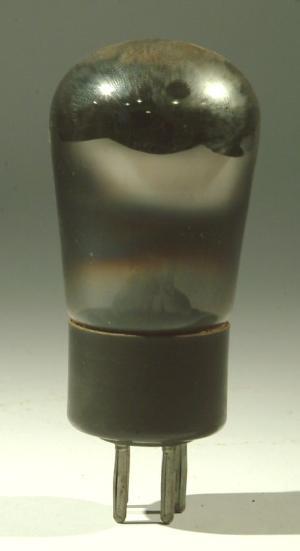
Falf driodaidd un-gell gynnar a ddefnyddid mewn derbynyddion telegraff di-wifr.
Derbynnydd Di-wifr Un-Don
Gan George Blythe, Meifod, ar gyfer Mrs S. Williams, Meifod. 1926.
Mae'r derbynnydd hwn, a adeiladwyd i Mrs S. Williams, siop 'Central Stores' Meifod, yn defnyddio triod allbwn clywedol PM2 gan gwmni Mullard, yn hytrach na'r un gwreiddiol, 'Wuncel' gan Cossor.
Derbynnydd Telegraffiaeth Crisial Di-wifr, Marc III, Rhif 93
Gan Robt. W. Paul. 1916.
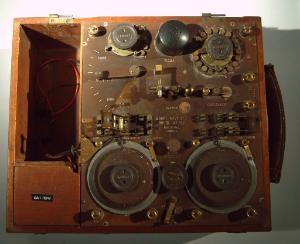
Byddai'r teclyn hwn yn cael ei ddefnyddio i dderbyn gwybodaeth dros bellteroedd cyfyngedig yn ddi-wifr yn ystod y Rhyfel Byd Cyntaf. Derbynyddion goddefol yw derbynyddion crisial a dim ond sain gwan maent yn ei greu felly bu'n rhaid defnyddio clustffonau sensitif i wrando arnynt.
Derbynnydd Telegraff Di-wifr 'Cydlynydd' Hertz
Adeiladwyd gan W. Shapland, Coleg Prifysgol Cymru, Aberystwyth, 1905
Radio-dderbynnydd di-wifr cynnar. Fe'i gelwid yn 'Gydlynydd' (Coherer) oherwydd y byddai'r naddion metel yn y tiwb yn 'cydlynu', hynny yw glynu wrth ei gilydd, pan fyddai signal radio yn weithredol. Roedd hyn yn golygu y byddai mwy o gerrynt D.C yn llifo.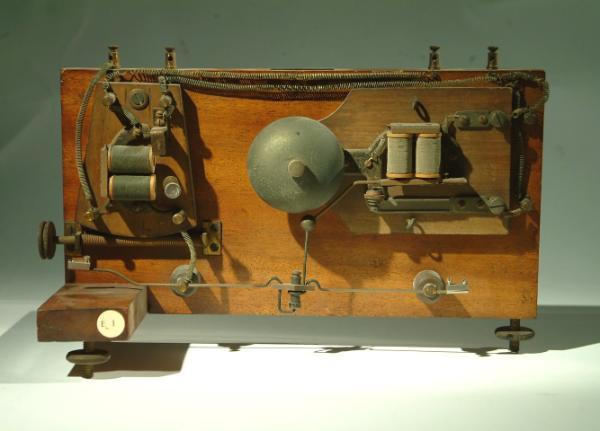
Wireless Telegraphy Coils
Metal coils used in early wireless telegraphy receivers.
From B. Davies’ collection.-600x308.jpg)
Type B5 Radio Valve
By BTH, 1925
BTH (British Thompson-Houston) Type B5 valve for use in wireless radio receivers.
Telegraph Licences
1923-1929
A collection of licences for Mr. John Slack of Stockport “to establish a wireless receiving station."
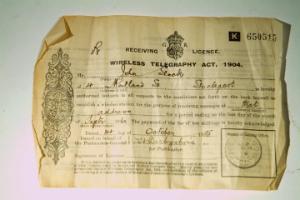
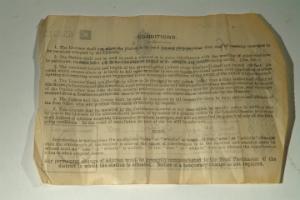
Brownie “BBC” No. 2 Model Crystal Radio Set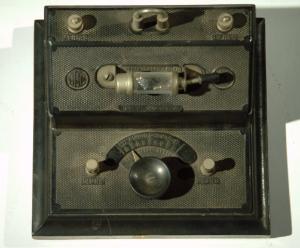
By Brownie Wireless Co., 1925
This set is made from moulded ebonite and is one of the first radios to have a plastic housing. Called the BBC because it could be tuned to the BBC’s medium wave transmitters.
Condenser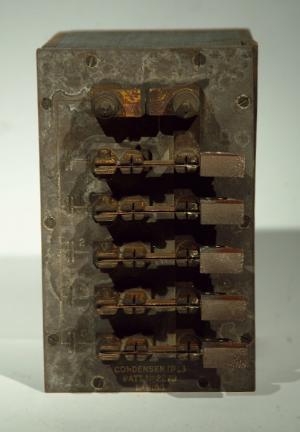
Circa 1905
Variable step condenser likely used in early wireless telegraphy.
Model of Wheatstone and Cooke’s Single Needle Telegraph
Circa 1890
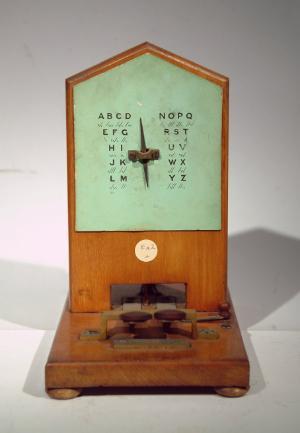
Used on railways up until 1950, this telegraph was an improvement on the multi-needle telegraph. However, the code was more complex and required a longer transmission time.
Purchased from St. David’s College, Lampeter, 1945.
Single Needle Telegraph Variant
Circa 1890
A model of Wheatstone and Cooke’s single needle telegraph, in bad condition.
Two Stage L. F. Amplifier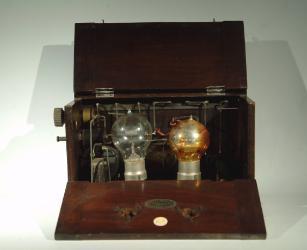
By Wates Bros. Ltd., London, 1924
A two-stage L. F. amplifier for converting 1 or 2 valve receivers into loudspeaker. Valves are not original.
Atlantic Telegraph Cable
Circa 1857
A small piece of the transatlantic telegraph cable, for use with which Thompsons reflecting galvanometer was developed.
Atlantic Telegraph Cable Charm
Circa 1857
A small section of the transatlantic telegraph cable that has been made into a charm with the inscription: ‘Atlantic Telegraph Cable 1857. M. McC. To W. J. R. P.’
Air Ministry VT94 Valve
This triode was designed for use on high frequency receivers of up to 6MHz.
Induction Coil
Circa 1900
A small induction coil of the type used in early wireless telegraphy experiments.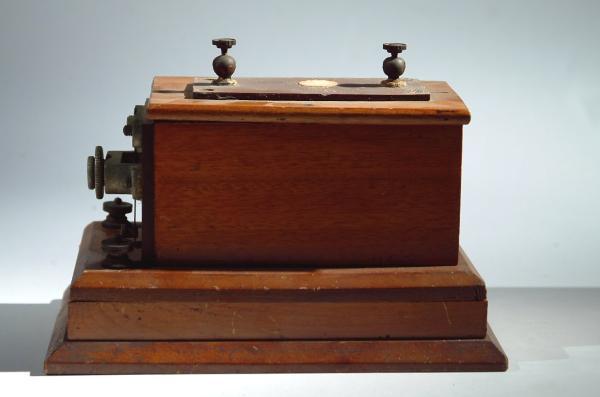
Desk Telephone
By The British L. M. Ericsson Mfg. Co. Ltd., Beeston Notts. 1830
This telephone was in the Professor’s room in the old Physics Department in King St. and was part of the internal telephone system.
Hand Magneto
Circa 1910
From a telephone, when wound this magneto rang a bell at the other end of the line.
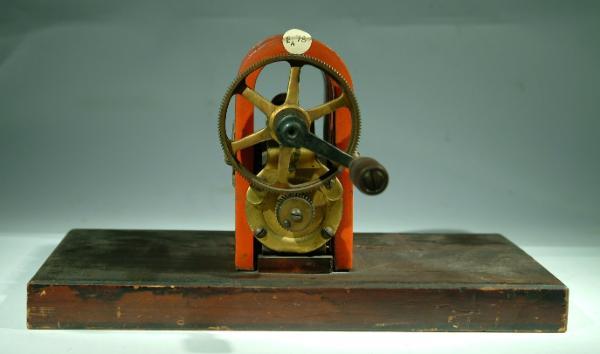
Breguet’s Dial Telegraph Transmitter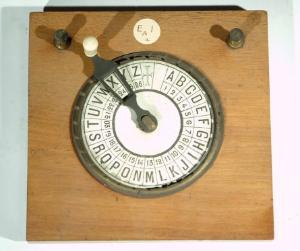
Circa 1880
A model of a transmitter for Breguet’s Dial Telegraph.
Purchased from St David’s College, Lampeter, 1945.
